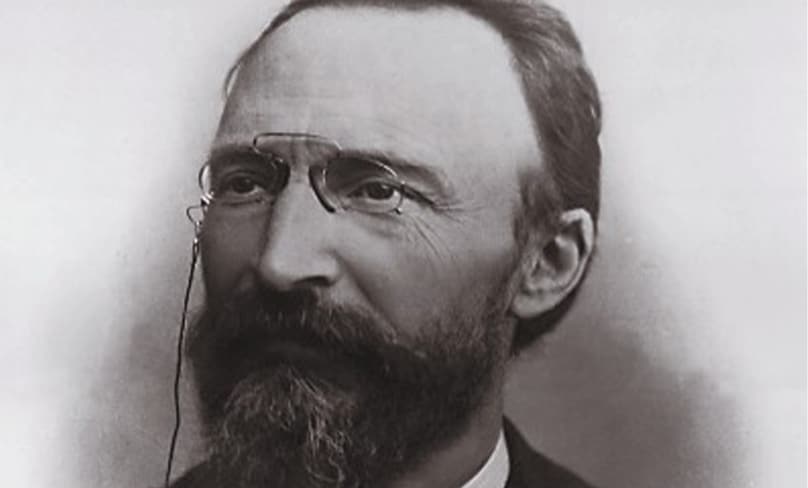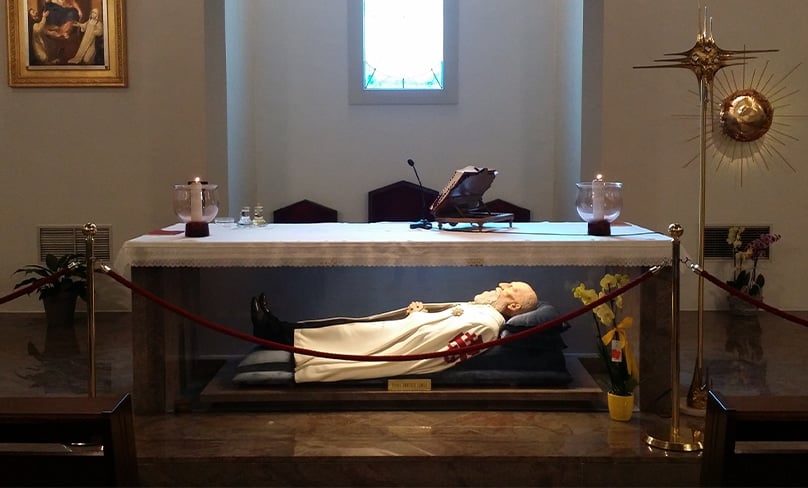
Dear Father, a friend told me there is a man who has been beatified by the Church who was formerly a satanic priest. Is this true?
Surprising as it sounds, it is true. The man is Bartolo Longo, an Italian lawyer who died in 1926 and was beatified by Pope John Paul II in 1980.
Bartolo was born into a wealthy, devout Catholic family in Sicily in 1841. When he was 10 his father died and his mother remarried a lawyer.
Despite his stepfather wanting him to become a teacher, Bartolo was determined to become a lawyer. He prevailed and in 1861, at the age of 20, he began his studies in law at the University of Naples.
In the 1860s the church in Italy was at odds with the strong nationalistic movement that inspired the cause for the unification of the different states into one country. General Giuseppe Garibaldi, who played a key role in the movement, saw the papacy as opposed to the movement of Italian nationalism, and he campaigned for the elimination of the papal office altogether.
The church in Europe at the time was also competing with the growing popularity of spiritualism and occultism. As a result, many students at the University of Naples were taking part in demonstrations against the pope, and many also became involved in witchcraft and were consulting mediums.
Bartolo was caught up in this and he joined a movement that led him into a Satanic cult. After some study and several “spiritual” experiences, he was “ordained” a Satanic priest. In the following years he suffered from depression, nervousness and confusion.
Bothered by paranoia and anxiety, he turned to a hometown friend, Vincenzo Pepe, for guidance. Vincenzo convinced him to abandon Satanism and he introduced him to the Dominican priest Alberto Radente, who led him to devotion to Our Lady and the rosary.
Bartolo wrote of his personal struggles with mental illness, which led him at one point to thoughts of suicide. He rejected these thoughts, recalling the promise of St Dominic that anyone who propagated the rosary would be saved. It was this promise that convinced him to encourage public devotion to the rosary.

On the feast of Our Lady of the Rosary, 7 October 1871, Bartolo became a third order Dominican, taking the name Rosario. Around that time he reportedly went to a séance, where he held up a rosary and declared: “I renounce spiritualism because it is nothing but a maze of error and falsehood.”
Throughout this time he kept up his law practice and went to Pompei to look after the affairs of Countess Mariana Farnararo Di Fusco.
In Pompei he was shocked at the erosion of the people’s faith. He wrote: “Their religion was a mixture of superstition and popular tradition … For their every need … they would go to a witch, a sorceress, in order to obtain charms and witchcraft.”
He saw that these practices were a result of the people’s great lack of catechesis.
With the help of Countess Mariana he started a confraternity of the rosary and in October 1873 he started restoring a dilapidated church in Pompei.
He also restored a painting of Our Lady of the Rosary acquired from a junk shop by Fr Alberto Radente and had it placed in the church in an effort to encourage pilgrimages. Alleged miracles began to be reported and people went in great numbers to the church.
The bishop of Nola encouraged Bartolo to begin the construction of a larger church, which was consecrated in 1891, and in 1939 the new church was enlarged and it is now the Basilica of Our Lady of the Most Holy Rosary of Pompei.
At the encouragement of Pope Leo XIII, Bartolo married Countess Mariana in 1885 and they performed many charitable works together. Bartolo died in 1926 at the age of 85 and his body lies in a glass case in the Basilica.
On beatifying him in 1980, Pope John Paul II called him the “Apostle of the Rosary.” In his apostolic letter Rosarium Virginis Mariae (2002) on the rosary, Pope John Paul mentioned Blessed Bartolo, saying that he saw the beads of the rosary “as a ‘chain’ which links us to God.”
